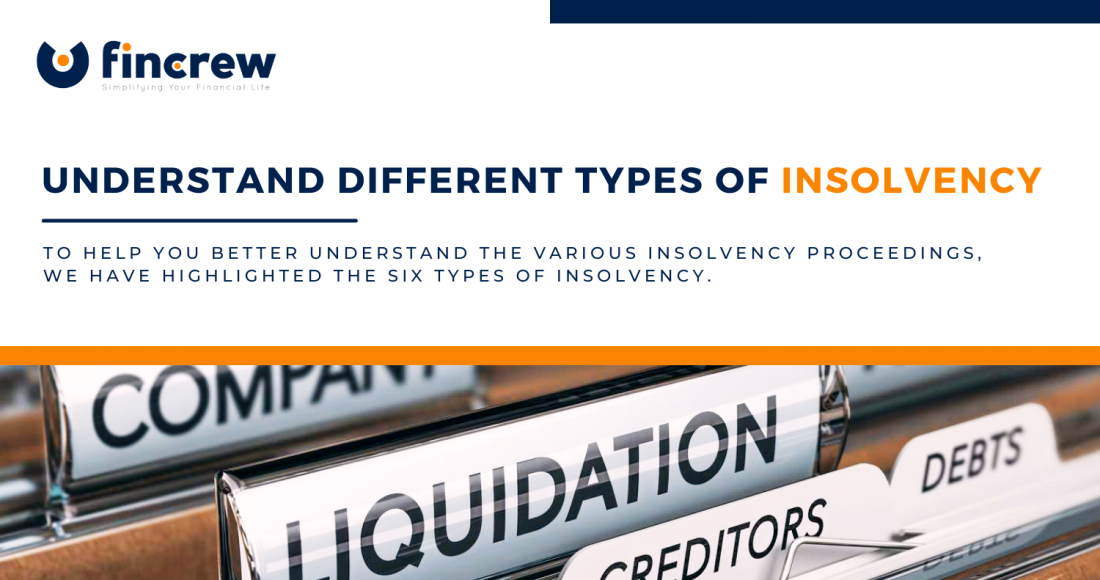A company or individual becomes insolvent when they cannot pay their debts due to financial hardship. An individual or company facing insolvency can take advantage of several insolvency procedures to manage the situation well. When such an issue arises, you should contact the Insolvency Service, which oversees financial failures. You should also seek expert advice when dealing with insolvency. When it comes to managing bankruptcy, there is a lot of jargon, information, and policies to track. To help you better understand the various insolvency proceedings, we have highlighted the six types of insolvency and explained what each means.
Bankruptcy
If a person cannot pay back their debts, one option may be to file for bankruptcy. The bankruptcy process only applies to individuals, sole traders, or partnerships. The whole process usually takes 12 months, after which the debtor (the person who owes the money) is discharged. Insolvency under this type is legal and should not be regarded as a simple solution to financial problems. We recommend that you talk to a specialized bankruptcy team to determine whether any alternatives would be more appropriate for your situation.
Individual Voluntary Arrangement (IVA)
As an alternative to bankruptcy, IVA is an arrangement between individuals and their creditors. They present creditors with a copy of this agreement, and if they accept it, it becomes legally binding. Individuals can continue trading after entering an IVA, making it more attractive than filing for bankruptcy. This type of insolvency may be best for those with regular household incomes. Rather than paying more than they can afford for some time, the individual only pays what they can afford once the IVA is over.
Company Voluntary Arrangement (CVA)
This option can help ensure the survival of a business while allowing the directors to remain in control. The CVA is similar to an Individual Voluntary Arrangement (IVA), a formal agreement between business owners and creditors whereby debtors pay a specific amount over time. The arrangement will become legally binding if the creditors accept the proposal. Any outstanding debts are written off at the end of the CVA period. For a business to enter a CVA, it must return to profitability and have a viable future. A CVA may be the best option if you are willing to fight for your company’s survival.
Compulsory Liquidation
It is winding up a partnership or a company through a court order (winding-up order). A petition is usually filed by a creditor who alleges the company owes them money and cannot pay it. Usually, when the order is made, the Official Receiver becomes the liquidator, but an Insolvency Practitioner will take over if there are significant assets. Liquidators are responsible for realizing the company’s assets, paying all fees resulting from the liquidation, and paying creditors in strict priority order, provided funds allow.
Creditors’ Voluntary Liquidation (CVL)
In this way, a company can close while handling the process legally and adequately. Whenever a company is in danger of insolvency, its directors must cease trading and seek professional advice. Ultimately, a CVL may be the best course of action if this company does not have a viable future or cannot return to profitability. A director may not have to pay to liquidate a limited company if the process is done correctly at the earliest possible time. If the process is done correctly, they use assets to pay for insolvency. In contrast with compulsory liquidation, shareholders can wind up their company without a court order. Shareholders will appoint a liquidator, who will be responsible for paying all fees associated with the liquidation process. Furthermore, the liquidator must pay creditors according to the company’s budget.
Administration
The administration is a procedure for limited companies and partnerships that may get the company out of trouble and back to trading as quickly as possible. Administrators can be appointed to companies that cannot pay their debts or are likely to do so shortly. A court may select one (on request from a creditor, director, or partner), a creditor who holds a qualifying floating charge over the business, or a company director. The primary objective of an administrator is to keep the company operating. Even if this isn’t possible, the administrator will get creditors a better result than if the company was wound up. The administrator will sell the company’s assets if neither of these alternatives is possible to pay at least some secured or preferential creditors, such as the bank or employees.





